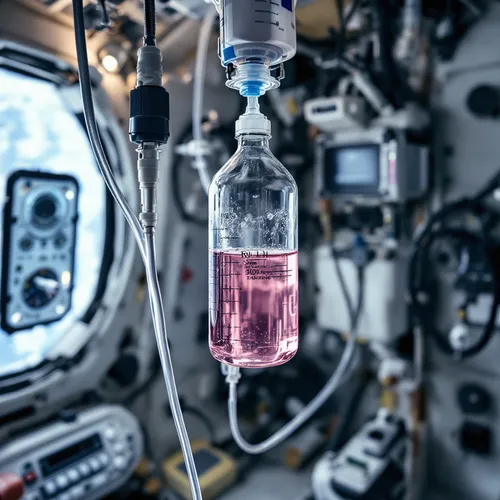IV Fluid Administration
Administering IV Fluids in the ISS and Gateway Space Stations
Administering intravenous (IV) fluids in space, particularly on the International Space Station (ISS) and the upcoming Gateway space station, presents unique challenges due to the microgravity environment. In microgravity, the behavior of fluids is significantly altered; they tend to form globules rather than flow freely, which can complicate the delivery of IV fluids.
Fluid Management: On the ISS, astronauts must carefully manage fluid administration to ensure that the fluids are delivered effectively. This involves using specialized equipment designed to function in microgravity, such as infusion pumps that can accurately control the flow rate of fluids.
Physiological Considerations: The physiological effects of microgravity also impact how fluids are absorbed and distributed in the body. Astronauts experience fluid shifts, which can lead to changes in blood volume and pressure. This necessitates close monitoring of the astronaut's condition to adjust fluid types and volumes accordingly.
Emergency Situations: In emergency scenarios, such as dehydration or medical emergencies, the ability to administer IV fluids quickly and effectively is crucial. The protocols for IV administration in space must be well-defined and practiced to ensure that crew members can respond promptly to medical needs.
Overall, while administering IV fluids in space is feasible, it requires careful planning, specialized equipment, and a thorough understanding of the unique challenges posed by the space environment.

